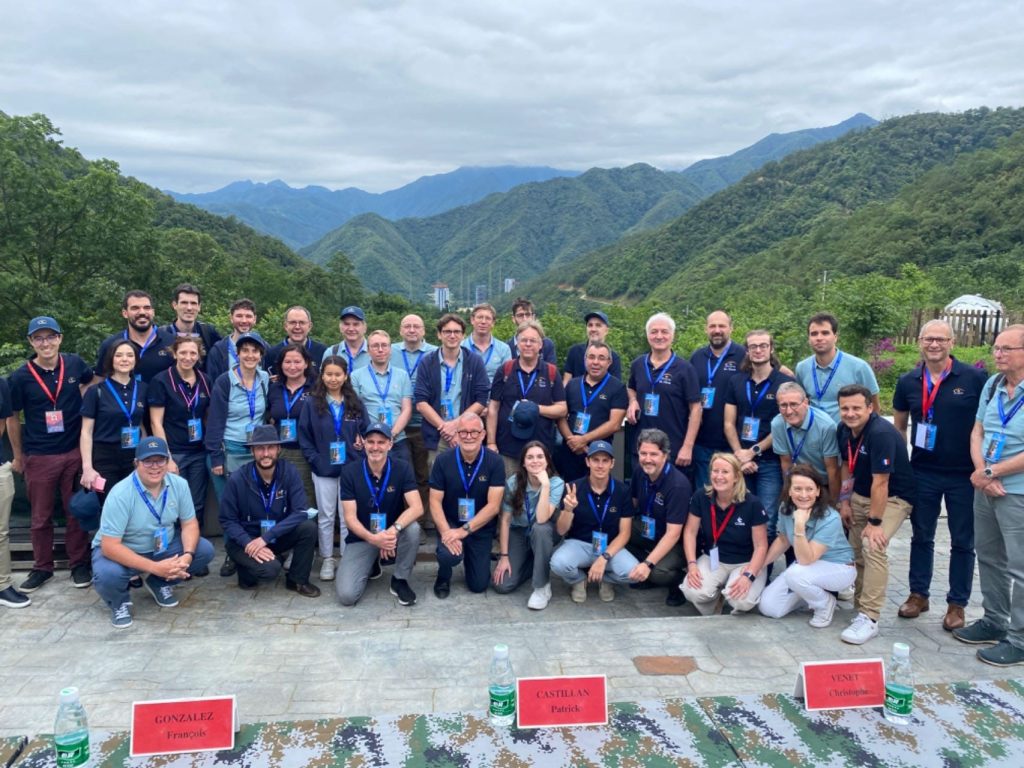At 9 a.m. on Saturday June 22nd, China’s Long Marche 2C rocket lifted off from the Xichang launch base in Sichuan province, carrying the Franco-Chinese satellite Svom (Space Variable Object Monitor). A few minutes later, Svom was positioned in low orbit at an altitude of 650 km. It is now ready to begin its start-up phase, which will last several months, with scientific operations due to begin in October.
Translated with DeepL.com (free version)
CEA/CNES/CNRS press release

A mission to explore the Universe’s most violent phenomena
Gamma-ray bursts, which will be detected by the SVOM satellite, are sudden, intense bursts of X-ray and gamma-ray light. They are associated with the cataclysmic formation of black holes, either by the merger of two compact stars (neutron star or black hole), or by the sudden explosion of a massive star, twenty to one hundred times larger than our own Sun.
The first traces of observation of these cataclysmic phenomena date back to China, more than a millennium ago. Discover the story of these first observations, a fascinating plunge into the beginnings of the Universe.
Credit CEA, author JM Bonnet-Bidaud, production Frederic Durillon, Animéa Studio
Irfu’s involvement in the two French instruments
The SVOM project at Irfu began in 2017. Over 16 years (2017-2023), the project has mobilized nearly 300 men.an, researchers, engineers and technicians from Dap, DEDIP and DIS.
Irfu was involved in both the design of the two French instruments MXT and ECLAIRs, more specifically in the studies and development of the X-ray camera for the MXT instrument (news 2021)and the design and development of the trigger software on board the ECLAIRs instrument (news 2023).
For the first time in space, the innovative MXT telescope will use “Lobter Eye” optics based on the assembly of millions of leaded glass micropores. In response to the ECLAIRs alert, MXT will observe the gamma-ray burst in the soft X-ray range.

Detection by the ECLAIRs telescope is the result of the on-board computer and its software, developed over 6 years at Irfu. This is one of the most complex pieces of software ever installed on a space instrument. In addition to managing the instrument (power supply, temperature regulation, receiving and transmitting commands), it analyzes sky signals in real time in search of gamma-ray bursts, and reorients the satellite without human intervention – a feat virtually unheard of in the space world.
- T0 Arrival of gamma-ray burst
- T0 + 30s Detection and first localization by ECLAIRs
- T0 + 2′ Alignment of SVOM with the direction of the burst
- T0 + 5′ More precise localization by MXT, followed by visible telescopes
The teams are also involved in the “Avocat Sursaut” missions, in charge of monitoring the alerts sent by the satellite, thanks in particular to the control center located on the institute’s premises at DAp.
-
T0 + 10′ Confirmation of the burst and its location by a “burst lawyer”; ground telescopes alerted; detailed study begins
-
T0 + 2h First determination of burst distance by large telescope


CEA is the leader of the consortium contributing to the scientific ground segment : CEA/AIM, INSU (IAP, IRAP, LAM, Obs Paris, Obs Strasbourg), IN2P3 (APC, CPPM, LUPM, IJClab). CNES is also involved, mainly by providing a VHF network dedicated to receiving warning data.
The FSC (French Scientific Center) hosted at DAP is based on a distributed architecture that enables alert data to be analyzed in near-real time, and the information needed to monitor the afterglow to be disseminated to the global community. Alert data are also analyzed by “Burst Advocates”, French and Chinese scientists on duty 24/7, who will enrich the scientific data content and optimize monitoring with large observation facilities operating at all wavelengths. The ground segment is also designed to respond rapidly to targets of opportunity of all kinds (multi-messenger, transient sky).
Explanatory images of the ECLAIRs and MXT instruments
video youtube CNES (Copyright: CNES – May 2024) produced by Fab&Fab
Contacts :
- Bertrand Cordier = Co-PI mission Svom
- Diego Gotz = I-PI MXT ; Frederic Pinsard = Project manager
- Arnaud Claret,= I-PI segment sol scientifique français de Svom ; Henri Louvin = Project manager
- Stéphane Schanne = scientific manager of ECLAIRs flight software; Francois Daly = Project manager
—-
Site web Svom
Twitch TV CNES SVOM : À l’affût des sursauts gamma


